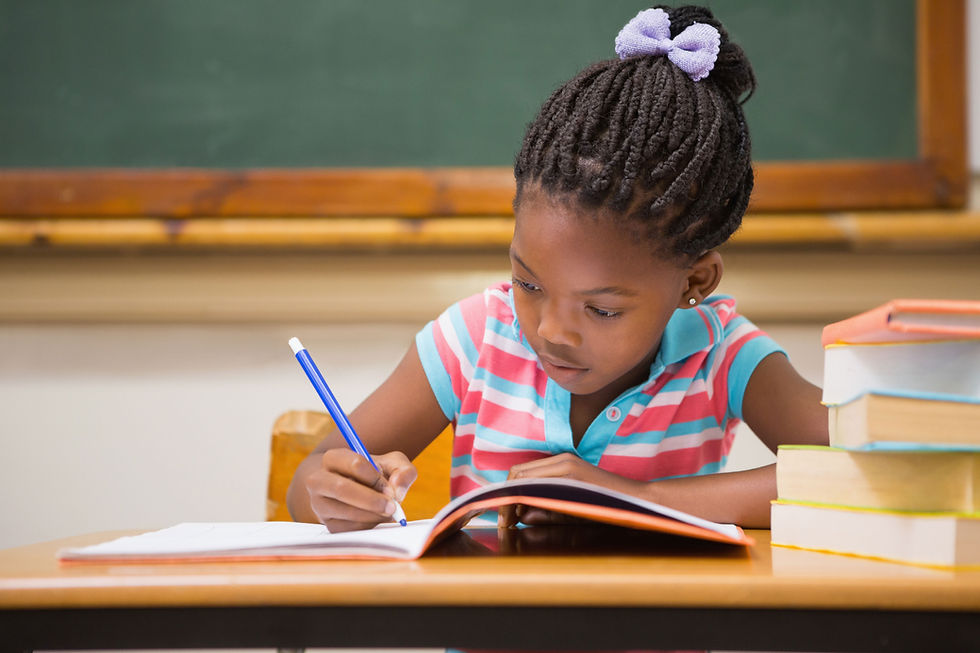Sorting: A Key Skill for Logical Thinking and Everyday Life
- Santiago Marván
- Aug 5
- 3 min read
Updated: Aug 14

The ability to sort and classify is one of the fundamental building blocks of logical, mathematical, and scientific thinking in children. At first glance, it might seem simple; grouping things by color, shape, or size, but in reality, it involves complex mental processes: observing, comparing, identifying characteristics, establishing criteria, and making decisions.
From the earliest years, children start forming mental categories to understand their surroundings. That’s why encouraging sorting skills in daily life is essential for their cognitive development.
🔹 What Is Sorting?

Sorting means grouping objects, ideas, or people according to their similarities or differences. It’s a mental function that helps children organize the world, identify patterns, anticipate outcomes, think logically, and solve problems.
A child who practices sorting is strengthening skills such as:
🧐 Attention and observation
🧠 Visual memory
🔍 Analysis and synthesis
💡 Abstract thinking
⚖️ Understanding cause-and-effect relationships
⏳ At What Age Does Sorting Develop?

18–24 months: Children start sorting by simple characteristics like color or size.
3–4 years: They can combine multiple criteria, like “all the small red cars.”
5–7 years: They develop hierarchical and reversible sorting, understanding that “all dogs are animals, but not all animals are dogs.”
Sorting is essential for future math and science learning, including concepts like sets, numbers, classification, and properties of objects.
🏡 How to Encourage Sorting at Home
In daily routines:
🧦 Folding laundry: Match socks, group shirts by color, towels by size.
🧸 Cleaning up toys: Sort by type (cars, dolls, blocks), color, or function.
🛒 Grocery shopping: Ask your child to group fruits, vegetables, or cold items together.
🍴 In the kitchen: Sort utensils, ingredients, or food groups (dairy, grains, proteins).
With fun games:
🎨 Category hunts: “Bring me something soft and red” or “Find something used in the kitchen.”
🖐 Texture or sound sorting: Match objects by how they feel or sound.
🌿 Create collections: Stones, leaves, buttons—then sort by size, color, or shape.
Board and card games that promote sorting:
🟥 UNO (by color and number)
🔎 Dobble/Spot It! (visual matching)
🧩 Memory (pairing images or concepts)
🎴 Set (finding combinations by color, shape, number, and fill)
🎲 Domino or Lince (visual relation and grouping)

🌟 A Kuvo Note
When children practice sorting and categorizing, they are building the mental scaffolding for future problem-solving. Kuvo complements this natural development with interactive, voice-powered stories and learning games that spark curiosity and introduce early logic concepts, screen-free and adapted to their own pace.
🧩 Learning to Sort Is Learning to Think
Sorting isn’t just a school skill, it’s a tool for understanding the world. When a child sorts while playing or helping at home, they are training their brain to reason, decide, and solve problems. And that’s the foundation of meaningful, lifelong learning.
References
Case, R. (1992). The mind's staircase: Exploring the conceptual underpinnings of children's thought and knowledge. Erlbaum.
Ginsburg, H. P., & Opper, S. (1988). Piaget’s theory of intellectual development (3rd ed.). Prentice Hall.
Papalia, D. E., Martorell, G., & Feldman, R. D. (2022). Experience Human Development (14th ed.). McGraw Hill.
Vygotsky, L. S. (1978). Mind in society: The development of higher psychological processes. Harvard University Press.
Wood, D., Bruner, J. S., & Ross, G. (1976). The role of tutoring in problem solving. Journal of Child Psychology and Psychiatry, 17(2), 89–100.









Comments